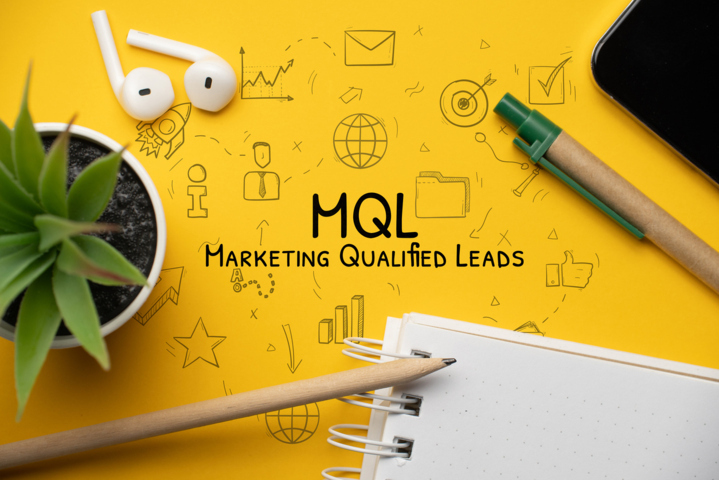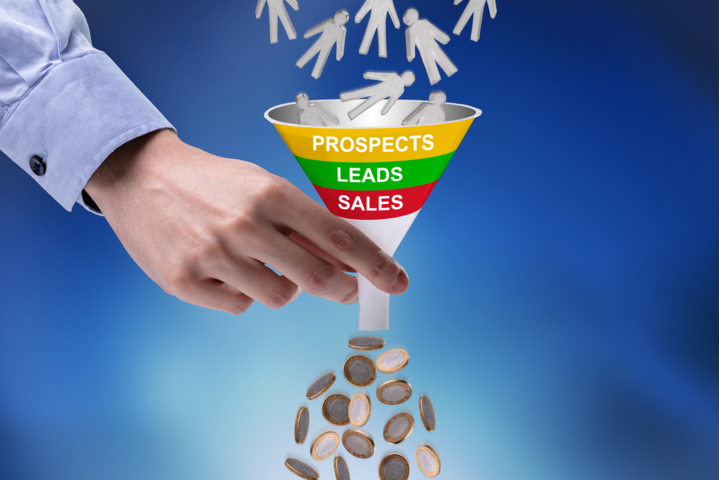Product Lead Growth vs Sales Lead Growth vs Customer Lead Growth Strategy? Discover which approach aligns best with your goals.
In today’s competitive business environment, companies must continually adapt and grow to stay competitive. Having the right growth strategy is, therefore, essential if you want to expand your business, reach your goals, and achieve long-term success.
However, if you are a business owner or a key decision-maker in a company, how would you choose your organization’s growth strategy? Would you go for a product lead, sales lead, or customer lead growth?
Choosing the right growth strategy for your business requires careful evaluation of several factors, including your company’s strengths, weaknesses, market position, and resources. In this article, we will comprehensively discuss what the three primary growth strategies are, how they differ from one another, and which strategy should you choose for your business. By thoroughly understanding your options and evaluating crucial factors, you can make well-informed decisions and select a growth strategy that will yield the best results and lead your company toward success.

Understanding the Different Growth Strategies
Growth strategies essentially are blueprints for companies seeking to expand their market presence, increase revenue, and achieve sustainable success. These strategies outline different approaches that organizations can adopt to propel their growth trajectory.
In this context, three prominent growth strategies stand out: Product Lead Growth vs. Sales Lead Growth vs. Customer Lead Growth. Each strategy focuses on distinct aspects of the business and emphasizes various components to drive expansion. Understanding these different growth strategies can help you identify which aspect of the business you need what to focus on and tailor your approach to match your unique business goals and market conditions.
Let’s delve into each growth strategy to gain insights into its core principles and advantages.
-
Product Lead Growth (PLG)
Product lead growth is a strategy that places the primary focus on your product, making it the key driver of customer acquisition, retention, and monetization.
With this strategy, companies develop exceptional products with user-friendly interfaces and compelling features—with the hope that these amazing products will sell themselves to buyers even without significant intervention from salespeople. To achieve this, companies will offer free trials or freemium versions to customers, encouraging them to experience the value of the product firsthand. Eventually, with a positive experience and encouraging feedback, the growth of the product and/or business will increase organically and virally.
Product-lead growth relies on seamless onboarding experiences, intuitive user interfaces, and continuous product improvement based on customer feedback. It is particularly effective in markets where users can easily test products before committing to a purchase, such as software-as-a-service (SaaS) and mobile applications.
-
Sales Lead Growth (SLG)
With a sales lead growth strategy, the driver of your business’s growth and expansion relies on a robust sales and marketing team, including talent, tools, and initiatives. With this approach, companies invest in talented salespeople, lead generation and sales techniques, and advertising opportunities to actively pursue new customers and close deals.
Companies that choose a sales lead growth strategy often employ aggressive marketing campaigns, targeted sales outreach, and personalized sales pitches to attract and convert prospects. Eventually, the goal is to build strong customer relationships, understand customer needs, and offer tailored solutions. Common in industries with longer sales cycles or complex products and services, sales-led growth requires effective sales management and a well-structured sales process to deliver sustainable growth.
-
Customer Lead Growth (CLG)
Customer lead growth focuses on customers’ insights and satisfaction to drive the business’ growth, expansion, and success. Therefore, companies adopting this strategy place significant emphasis on creating the best customer experience and offering unparalleled customer support and service. By doing these, they aim to nurture their customers and turn them into loyal brand advocates who promote the company organically and contribute to repeat business.
Customer-led growth takes advantage of customer feedback and data-driven insights to continuously improve products, services, and overall customer experience. In today’s competitive landscape, where customer satisfaction and loyalty define a business’s success, eventually this growth strategy has become a crucial component of many businesses.
If you are still baffled about the right growth strategy to employ and choose among Product Lead Growth vs. Sales Lead Growth vs. Customer Lead Growth, remember that each growth strategy plays a crucial role in the expansion and success of a company. Deciding which one to adopt depends entirely on the overall business goals, offerings, unique strengths, and market dynamics.

Product-Lead Growth vs. Sales-Lead Growth
The main difference between product-led growth vs seals lead growth is the approach to the business and revenue growth. Product lead growth relies on the product itself to attract and convert users through a self-serve model, free trials, and positive user experiences. Meanwhile, sales-lead growth relies on sales representatives offering personalized interactions and direct sales approaches to generate leads and close deals.
To dig deeper into the key features of each growth strategy and how they differ from one another, here is a comparative breakdown:
Product-Led Growth Strategy:
- Focus: Product lead growth focuses on the product or service as the primary method to drive customer acquisition and revenue growth.
- Approach: The emphasis is on creating exceptional products with user-friendly interfaces and valuable features that provide an excellent user experience.
- How It Works: Once the product is developed, companies adopting this strategy often offer free trials, freemium versions, or low-cost entry points to allow users to experience the product before committing.
- Methods Used: This method relies on organic and viral growth through positive word-of-mouth, referrals, and sharing of the product’s value by the customers who have experienced using it.
- Key Feature: It is customer-centric—putting the customer at the forefront and promoting a self-serve approach where users can explore the product independently and make informed decisions.
- Industries: Product lead growth is commonly seen in software-as-a-service (SaaS), mobile app development, and tech-focused companies where users can easily test and evaluate the product before subscribing.
Sales-Led Growth Strategy:
- Focus: Sales lead growth focuses on a strong sales and marketing team to drive customer acquisition and revenue growth.
- Approach: The emphasis is on lead generation, where companies adopting this strategy invest heavily in creating targeted marketing campaigns and building reliable sales teams to actively pursue and convert prospects into customers.
- How It Works: Once the sales team and marketing campaigns are in place, your sales representatives will offer sales pitches and tailored solutions to prospects that meet the specific needs and pain points of potential customers.
- Methods Used: Sales teams actively reach out to prospects through cold calls, email campaigns, direct sales, social media engagement, and networking to generate sales opportunities.
- Key Feature: This type of growth strategy builds on customer relationships. By connecting and engaging with potential customers, sales representatives aim to close deals and generate immediate revenue from them.
- Industries: Sales lead growth is commonly used in industries with longer sales cycles, complex products, hands-on training, or where direct sales engagement is essential to secure business.
While PLG and SLG employ unique and distinctive approaches, there is no strict rule saying that you cannot use both. Many companies use a combination of both product-led and sales-led growth strategies, tailoring their approach based on the nature of their product or service, target market, and customer preferences. Should you consider using a combination of these strategies, the key is creating an amazing product or service, and then employing a robust sales team that will offer this to your prospective buyers, allowing them to explore the product or service first before committing.
Customer-Lead Growth vs. Sales-Lead Growth
When choosing between customer-lead growth vs. sales-lead growth strategy, the main question to ask yourself and key stakeholders in your business is, “Should we focus on customer acquisition or customer satisfaction?” With customer-lead growth, it prioritizes customer satisfaction, loyalty, and retention, aiming to turn customers into brand advocates who contribute to organic growth through positive referrals. On the other hand, sales lead growth focused on acquiring new customers, closing deals, and generating revenues through active sales and marketing efforts driven by sales representatives of the company,
To dig deeper into the key features of each growth strategy and how they differ from one another, here is a comparative breakdown:
Customer-Led Growth Strategy:
- Focus: Customer lead growth focuses on methods and approaches that prioritize customer satisfaction, loyalty, and retention as the main drivers of business expansion.
- Approach: The strategy revolves around ensuring that customers have a positive experience with the product or service, addressing their needs and pain points effectively.
- How It Works: The company employs strategies to listen to and understand what the customer values and puts these insights to use by providing a great product experience and offering exceptional customer service.
- Methods Used: This strategy aims to build strong customer relationships through personalized interactions, attentive customer support, and proactive problem-solving.
- Key Feature: This growth strategy is feedback-driven, relying mostly on customer feedback and data-driven insights to continuously improve products, services, and the overall customer experience.
- Industries: Customer lead growth is applicable across different markets and industries, where customer retention and repeat business are crucial for long-term success.
Sales-Led Growth Strategy:
- Focus: Sales lead growth focuses on a strong sales and marketing team to drive customer acquisition and revenue growth.
- Approach: The emphasis is on lead generation, where companies adopting this strategy invest heavily in creating targeted marketing campaigns and building reliable sales teams to actively pursue and convert prospects into customers.
- How It Works: Once the sales team and marketing campaigns are in place, your sales representatives will offer sales pitches and tailored solutions to prospects that meet the specific needs and pain points of potential customers.
- Methods Used: Sales teams actively reach out to prospects through cold calls, email campaigns, direct sales, social media engagement, and networking to generate sales opportunities.
- Key Feature: This type of growth strategy builds on customer relationships. By connecting and engaging with potential customers, sales representatives aim to close deals and generate immediate revenue from them.
It is important to note that while these two growth strategies are focused on two different approaches, they are not mutually exclusive. This means that you can combine several methods and approaches from one strategy with the other. In fact, some companies incorporate elements from both customer lead and sales lead growth strategies.

The Advantages of Sales-Lead Growth Over Other Growth Strategies
Sales lead growth offers several advantages over other growth strategies, making it a preferred approach for many businesses in various industries. If you are still deciding which growth strategy to employ for your business, here are some key advantages of SLG you should consider:
-
Faster Revenue Generation
Since the goal of sales lead growth is to engage with prospects and close deals, the strategy is designed to drive immediate revenue for your business. Compared to other growth strategies, SLG generates sales and revenue faster. Both PLG and CLG require more time for customer adoption and organic growth. Meanwhile, a well-executed sales lead approach can lead to quicker revenue generation, which is especially crucial for startups and businesses in competitive markets.
-
Control Over Customer Acquisition
Using SLG gives you more control over customer acquisition. By employing sales teams, creating marketing campaigns, and implementing personalized selling, you can actively engage with potential customers, understand their needs, and tailor solutions to convert leads into paying clients. With proper research, you can also easily identify your target audience and engage with prospects who are more likely to convert into paying customers.
-
Effective in Complex Sales Cycles
Some business models require long and complicated sales cycles before successfully acquiring buyers and customers. If this is true for your business, SLG can be highly effective and may be the best approach to achieving your goals.
With an effective sales team at your disposal, you can trust them to guide prospects around your products and services, build strong relationships with them, address possible objections, and help potential customers make the right decision. Unlike with PLG and CLG where you let the customers navigate around your offering, the active engagement of sales professionals in a sales-led growth approach can make a significant difference.
-
Targeted and Personalized Approach
One of the key advantages of SLG over other growth strategies is its personalization, allowing you to tailor and customize your sales pitch, presentation, and communication to specific market segments you are targeting. By understanding the specific pain points and requirements of potential customers, your sales teams can deliver tailored messaging and build stronger relationships with your prospects, increasing the chances of closing deals.
-
High-Value Product Offering
If you are offering high-value products or services, SLG can be the best approach as it allows you to clearly explain your value proposition and present the key benefits of your offering. The personalized attention and expertise provided by sales representatives can help instill confidence in potential buyers and justify the investment in premium offerings.
Moreover, with a sales team representing your product or service, they can professionally handle objections and rebuttals and turn these into opportunities for closing deals.
-
Competitive Advantage
In competitive markets, a proactive sales approach can give you an advantage in acquiring new customers and generating revenues. With a reliable and trained sales team reaching out to prospects, you can easily and conveniently differentiate yourself from competitors and position your products or services as the superior choice.
-
Flexibility and Agility
Sales lead growth strategy offers flexibility and agility in responding to market changes and opportunities. Your sales teams can quickly adjust their strategies, target different customer segments, and pivot based on real-time feedback and market trends. Therefore, proper training and guidance are important to ensure that your sales representatives can adapt to market changes and new opportunities.
-
Measurable Metrics
Another key benefit of using SLG is the clear and measurable metrics it provides which you can use for evaluating performance and success. Key performance indicators (KPIs) such as conversion rates, sales revenue, and customer acquisition costs are some of the metrics you can easily track and analyze to assess the effectiveness of your sales efforts. With available data to work on, you can adjust and improve your strategies accordingly.

Tips to Make Your Sales-Lead Growth Strategy Successful
Creating a successful sales lead growth strategy requires careful planning, execution, and continuous refinement. If you have decided to capitalize on SLG as your primary growth strategy, here are some tips to make it more effective and successful:
-
Define your objectives clearly. Outline your growth objectives and set measurable goals, including your target revenue, customer demographics, and key performance indicators (KPIs) that will track the success of your SLG strategy. Setting a clear goal will give you a specific direction on which route to take and what particular sales-driven actions to make.
-
Identify your target audience by creating a clear ideal customer profile. You can do this by conducting thorough market research, performing competitive analysis, and understanding the pain points and needs of the market. By knowing who your target audience is, you can tailor your sales messaging and approach to address their specific challenges effectively.
-
Build a strong sales team by hiring top sales talents. Invest in building a skilled and motivated sales team that can represent your business professionally and effectively. Hire talented sales professionals who understand your industry and the products and services you offer. Provide regular training and support to keep them updated on the latest industry trends and sales techniques.
-
Streamline and optimize your sales processes to ensure the efficiency and consistency of your strategies. Implement a well-defined sales funnel with clear stages, and establish criteria for lead qualification. Use customer relationship management (CRM) tools to track leads, manage interactions, and monitor sales performance.
-
Personalize your selling approach. Prospects feel valued and special when businesses take a personalized approach to selling. To do this, understand your prospect’s unique needs, pain points, and preferences. Then, tailor your sales pitch and solutions to align with their specific needs, demonstrating how your product or service can solve their problems effectively.
-
Leverage content marketing to complement your sales lead growth strategy. A few ways to do this is to create informative content such as blog posts, whitepapers, case studies, social media content, and videos that demonstrate your expertise and add value to potential customers. By providing valuable information, you can attract leads, nurture them, and build trust and relationships with them.
-
Persistence is key in sales, so don’t be afraid to follow up. Check-in with prospects, provide additional information, and address any concerns they may have. Building relationships and staying top-of-mind can be crucial in converting leads into customers.
-
Measure and analyze your marketing campaigns and sales performances. Track key metrics such as conversion rates, lead-to-customer ratio, and sales revenue. Use data-driven insights to identify areas for improvement and refine your SLG strategy accordingly.
-
Align your sales and marketing initiatives. Additionally, foster collaboration between your sales and marketing teams to ensure that they are both on the same page and are working toward a common goal. Ensure that marketing efforts align with the sales objectives, providing sales teams with high-quality leads and relevant marketing materials to support their efforts.
-
Finally, be open to adapting and innovation. Stay flexible and adaptable to changing market conditions and customer needs. Continuously innovate and refine your sales approach based on feedback and insights you get from your customers. Embrace new technologies and tools that can enhance your sales process and improve customer engagement.
By implementing these tips, you can create a successful sales-led growth strategy that not only allows you to acquire leads, but also drive revenue and strengthen your market position.
Sales-Lead Growth Examples: Popular Brands that Utilize SLG
Find inspiration from these well-known brands and companies that employ sales lead growth strategy to attract, engage, and convert customers.
Salesforce
Salesforce is one of the most popular and widely used customer relationship management (CRM) software. The company offers personalized product demos and free trials to potential customers, allowing them to experience the platform’s capabilities before making a purchase. Additionally, Salesforce’s sales team actively engages with trial users by helping them navigate the platform and offering guidance and support to convert them into paying customers.
HubSpot
An inbound marketing and sales software platform, HubSpot uses SLG by providing valuable marketing content, including blog posts, e-books, and webinars, to attract potential customers and generate leads through this useful information. The company’s sales team then nurtures these leads through targeted email campaigns and personalized interactions to encourage conversion.
Oracle
Oracle is a global technology company that offers various software and cloud solutions to users worldwide. The company invests heavily in employing and training sales reps, providing them with knowledge, resources, and support to ensure their teams are well-equipped to engage with clients effectively. Oracle’s sales reps are encouraged to build strong relationships with customers, understand their unique needs, and offer tailored solutions.
Wrapping It Up
There are various growth strategies you can implement if you wish to boost your sales and expand your business. These include product lead growth, customer lead growth, and sales lead growth strategies. With PLG, your product or service is the primary driver of customer acquisition and retention. With CLG, you use customer insights and feedback to customize your offering and drive revenue. While with SLG, you hire and empower sales teams to represent your business and close deals. Choosing the ideal growth strategy for your business requires careful assessment of your needs and targets, market dynamics, and overall growth objectives.
If your business is sales-driven and you wish to utilize a sales lead growth strategy to grow your business, hiring skilled sales professionals and building a reliable sales team is the first step you need to take. Sales Recruiters Chicago can connect you with top sales talents who can be pivotal to your business’s success. Fill out this form to find qualified sales professionals for your company or contact us and let us know how we can help you with your hiring and recruitment needs.



Comments are closed.